The United States is the third-largest country in the world in terms of land area. With such a vast expanse of land within its borders, the U.S. is an ecologically and climatologically diverse nation. Its borders encompass both tropical and arctic climates. Temperate rainforests and deserts are both part of the U.S. landscape. Along with the varied climates comes the wide array of animals that live in them. But, of all the animals that live in the 50 states, which ones weigh the most? Here are eleven of the heaviest animals that reside in the U.S. today.

A couple of notes as we begin: first of all, the list only accounts for animals that spend at least a portion of their lives on land. Ocean animals will be noted at the bottom.
Secondly, the animals are ranked by some of the larger individuals that have been observed. It doesn’t necessarily mean every animal will grow so large, but it also doesn’t mean they can’t grow larger than the weights listed. Some world records exceed the weights in the discussion below.
With those details in mind, let’s talk about some of the heftiest animals in the United States today.
11. Grizzly Bear — 800 pounds
Grizzly bears (Ursus arctos horriblis) once roamed the western half of the continental United States. Today their range is limited to very small pockets of the western U.S. Only about 1,500 grizzlies remain in the Lower 48, but upwards of 30,000 still roam the wilderness of Alaska.
A mature boar can weigh up to 800 pounds, though 600 pounds is a more average size. Sows often weigh 100-200 pounds less than boars.
These large brown bears are omnivores and can consume up to 90 pounds of food per day. Their wide-ranging diet includes grasses, roots, berries, and mushrooms. They also eat animals as small as insects and as large as deer and elk. Fish is a grizzly bear favorite, so they are often found near rivers and streams.
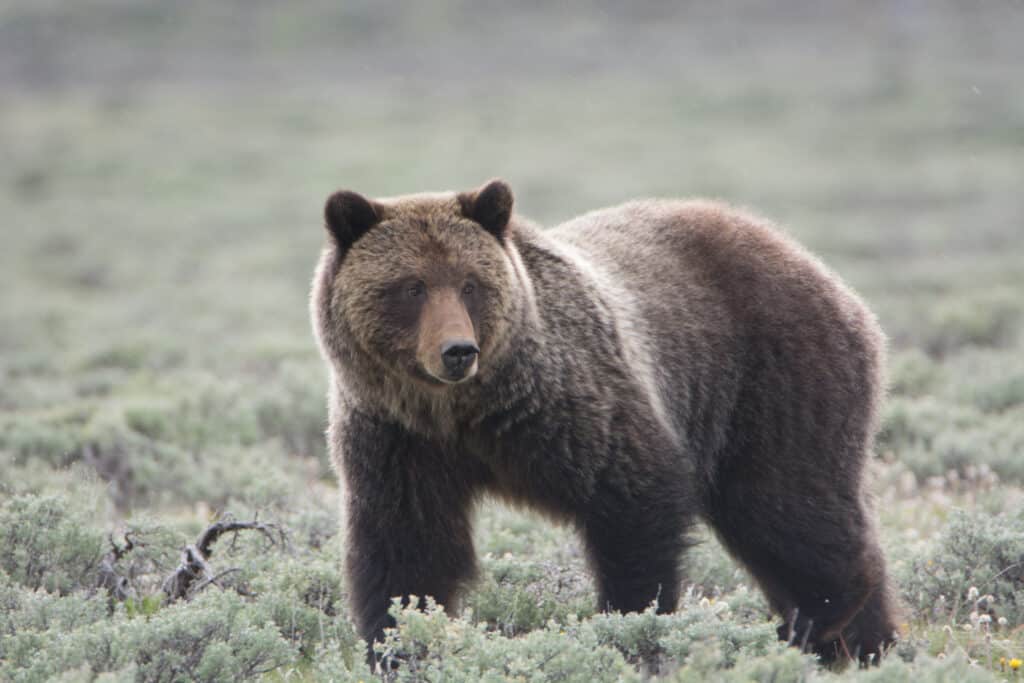
The grizzly bear eats up to 90 pounds of food a day, so it is constantly on the lookout for good eats.
©Jilll Richardson/Shutterstock.com
10. Muskox — 900 pounds
Mature bulls stand about five feet tall and can weigh up to 900 pounds. Cows stand around four feet tall and weigh roughly half the weight of bulls.
Alaska is the only U.S. state where the muskox (Ovibos moschatus) can be found. These animals disappeared from Alaska in the early twentieth century, but restoration efforts have brought the lumbering muskox back to the state to the point where limited hunting is legal.
The muskox is a long-haired animal that resembles a cow or bison but is actually more closely related to sheep or goats. The muskox has a double layer of dark, thick fur to protect it from the harsh arctic conditions where it lives. The top layer is a barrier from the snow and wind, while the under layer acts as a blanket to keep the muskox warm.
These bulky animals are herbivores. Summer provides a bounty of grazing as grass, flowers, and forbs grow in abundance. During the winter, muskoxen subsist on roots, woody plants, moss, and lichen.

Muskoxen have a double-layered coat over their large bodies to protect them from frigid conditions.
©Fitawoman/Shutterstock.com
9. American Alligator — 1,000 pounds
The American alligator (Alligator mississippiensis) resides in ten U.S. states, with Louisiana (2 million alligators) and Florida (1.3 million alligators) leading the way. Being a reptile, the alligator is cold-blooded (ectothermic), so it can only survive in warmer climates.
Exceptionally large male alligators can reach 1,000 pounds, though 600-800 pounds is more of an average size. Mature males can grow 14-15 feet long, while females are shorter and lighter.
These reptiles grow to prodigious size through their carnivorous diet. They are certainly not picky eaters. Alligators will predate fish, birds, and small mammals, but they will also target larger prey such as deer. Larger alligators will also cannibalize smaller alligators. There are even documented cases of alligators taking down Florida panthers and black bears! They are the true apex predators within their range.
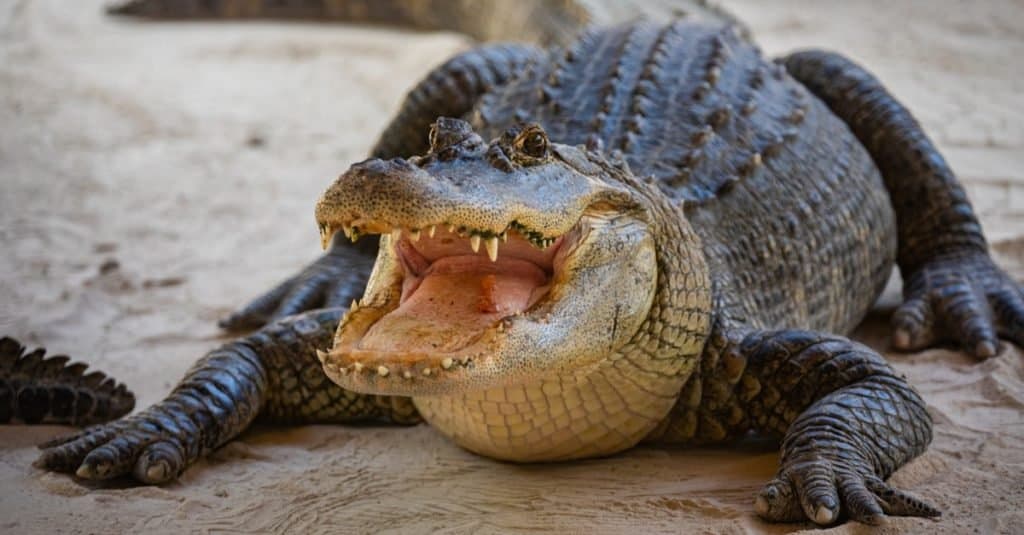
The American alligator never stops growing, and some individuals can grow up to 1,000 pounds.
©Mia2you/Shutterstock.com
8. Elk — 1,300 pounds
The elk (Cervus canadensis) is a large deer that once roamed much of the continental United States. Today, their range is mostly found in western states, with some small pockets in the east.
There are 14 subspecies of elk, the largest of which is the Roosevelt elk. Large bulls can weigh up to 1,300 pounds, though 900-1,100 pounds is the average.
Elk (also known as wapiti) are herbivores that can eat up to 20 pounds of food each day. They feed on grass year-round. During the summer, they also browse leaves and shrubs. In the winter, they eat tree bark to supplement their diet when there may not be enough grass to sustain them.
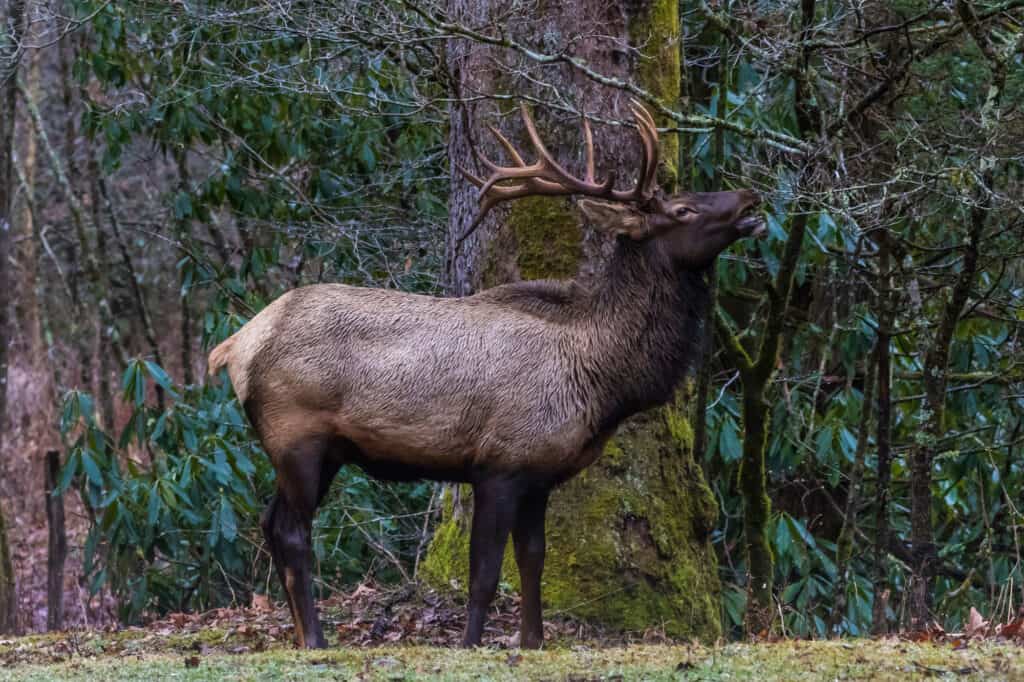
Elk are large deer that eat up to 20 pounds of grass, leaves, and other plant material each day.
©iStock.com/DimitrisTimpilis
7. Kodiak Bear — 1,400 pounds
This bear is a relative of the smaller grizzly bear. The Kodiak bear (Ursus arctos middendorffi) is the largest of all brown bears and is the second-largest bear in the world. A boar can stand almost five feet tall at the shoulder and weigh 1,400 pounds, easily landing it on the list of the heaviest animals in the U.S.
The ranges of grizzly and Kodiak bears do not overlap. Kodiak bears are only found in the Kodiak Archipelago in southern Alaska. The largest island in the chain, Kodiak Island, is also the second-largest island in the United States, trailing only the island of Hawaii.
Kodiak bears are omnivores. Fish, specifically salmon, are a critical part of their diet, but these bears actually eat more grass, berries, and plants than fish. Kodiak bears will also eat meat but rarely expend the energy needed to pursue a kill. They will eat carrion if the opportunity presents itself.
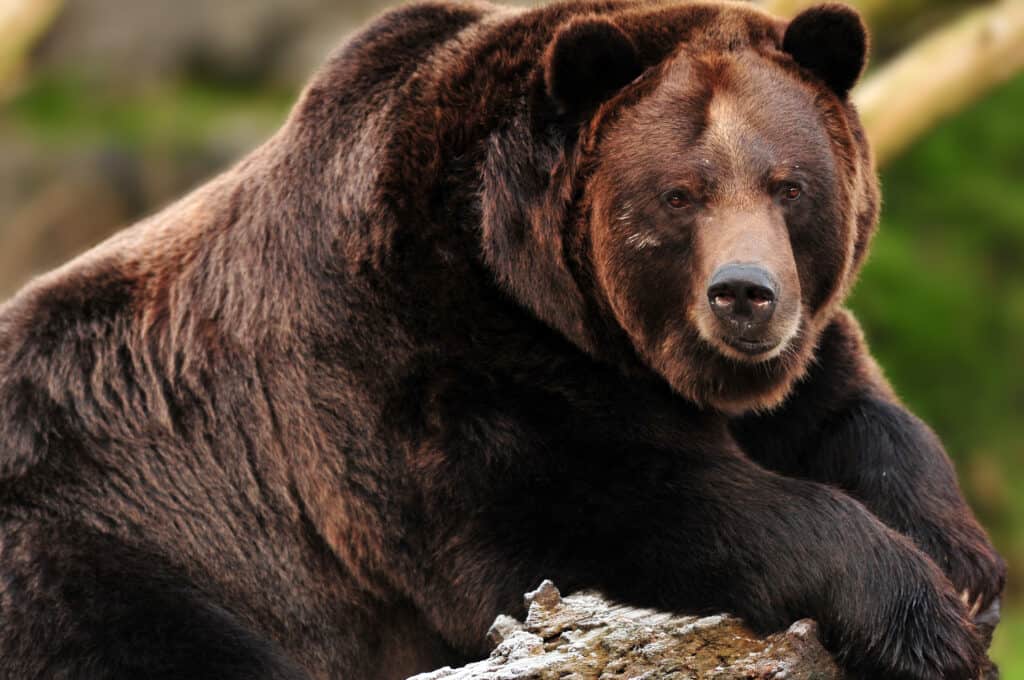
Kodiak bears are the largest brown bear in the world.
©neelsky/Shutterstock.com
6. Polar Bear — 1,500 pounds
The polar bear (Ursus maritimus) is the largest bear on Earth, though it often mirrors the size of the Kodiak bear. Kodiak and polar bears both often grow to 1,200 pounds, with large boars growing even bigger. An exceptional male polar bear can grow a bit larger than a big male Kodiak. In fact, polar bears are the largest land-based carnivorous mammal on Earth.
Kodiak and polar bears are both only found in one U.S. state: Alaska. Kodiak bears are found in the Kodiak archipelago in southern Alaska, while polar bears are only found in the northern reaches of the state.
Polar bears spend most of their year on sea ice. During the ice-free period (generally August to October), they can be found in coastal areas and on barrier islands.
These massive bears feed primarily on seals. The skin and blubber are high in fat and calories, which the bear needs to survive in its harsh environment. They will also predate birds and fish, along with the occasional walrus and reindeer. The bear will also scavenge the carcasses of dead whales and other large marine mammals.
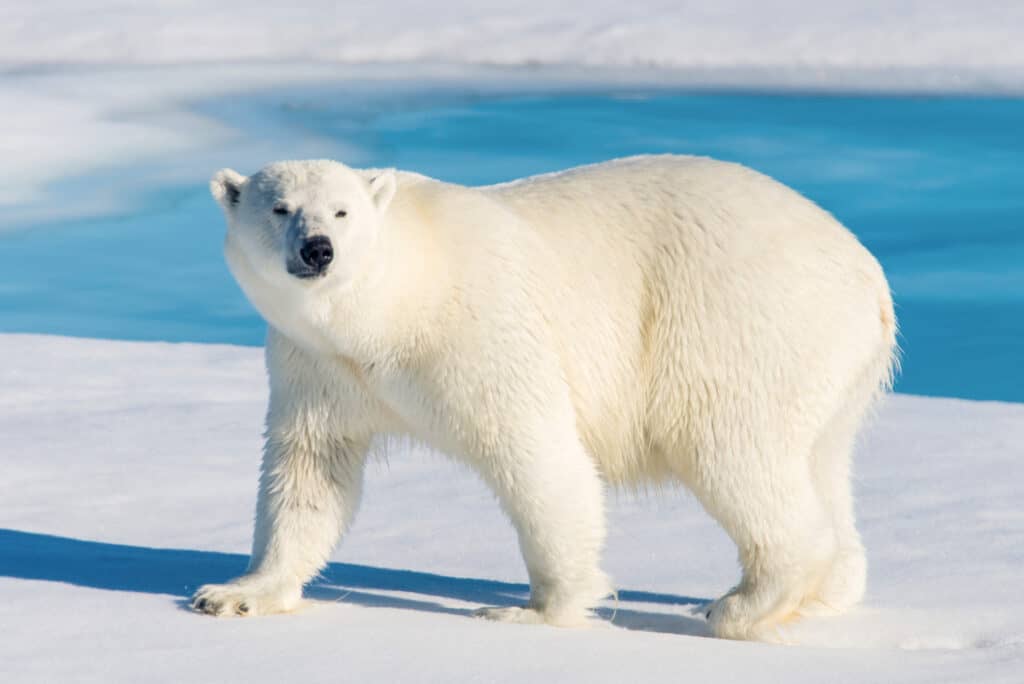
Polar bears are the world’s largest extant bears.
©iStock.com/Alexey_Seafarer
5. Moose — 1,700 pounds
The moose (Alces alces) is the largest of all deer species. It is also the tallest mammal in North America. The largest moose subspecies, the Alaska Yukon moose, can stand up to seven feet tall at the shoulder.
Bulls can weigh up to 1,700 pounds, though 1,200-1,400 pounds is more average (depending on the subspecies). Cows can weigh 800-1,300 pounds, on average.
The largest moose population in the United States is in Alaska, with around 175,000-200,000 individuals. The biggest moose numbers in the contiguous 48 states are found in Maine. The Pine Tree State has somewhere between 60,000-70,000 moose.
These massive deer eat an herbivorous diet. They often munch on leaves, bark, and twigs. They also wade into the water to reach aquatic plants. Moose are actually excellent swimmers, even swimming across rivers with ease.
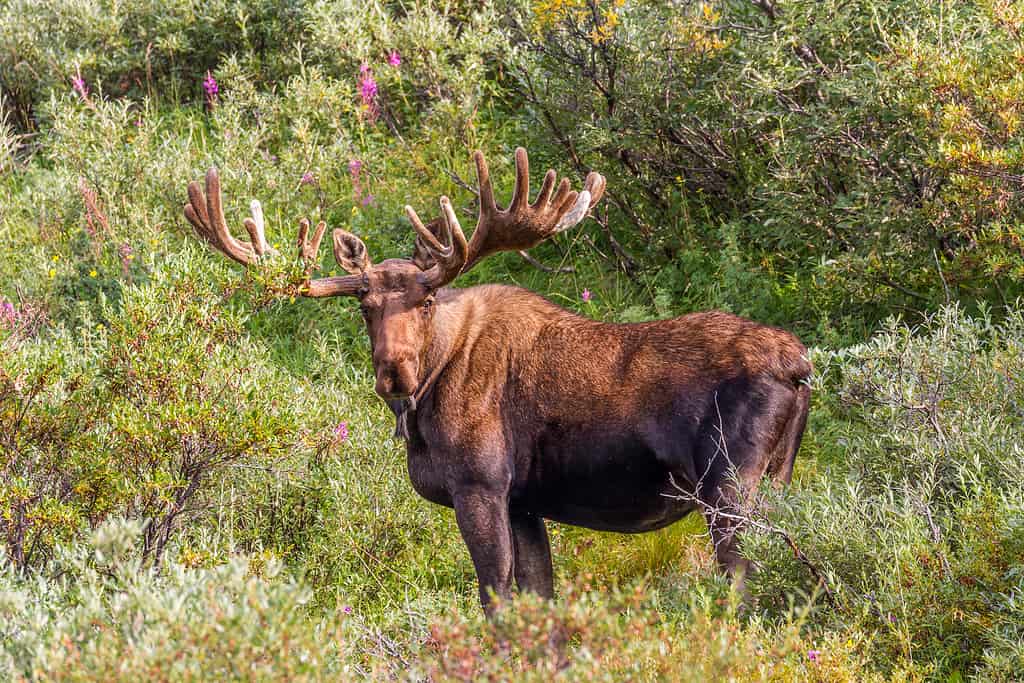
Moose are the largest of all the world’s deer.
©JacobLoyacano/Shutterstock.com
4. American Crocodile — 2,000 pounds
The American crocodile’s (Crocodylus acutus) range primarily runs from Mexico south to Peru. It is also found in Haiti, the Dominican Republic, Jamaica, and Cuba. South Florida represents the extreme northernmost reaches of this crocodile’s range and is the only place where it is found in the United States.
The American crocodile can sometimes be found in freshwater rivers, but it is more often found in brackish and saltwater environments.
These carnivorous reptiles grow larger than their crocodilian relative, the American alligator. Like the alligator, these crocodiles are not choosy about what they eat. If they can snag an animal in their powerful jaws that feature a bite force of over 2,900 pounds per square inch, that animal will become a meal.
Hatchlings and young crocodiles predate insects, crustaceans, snails, and small fish. Mature adults eat fish, turtles, snakes, crabs, and mammals.
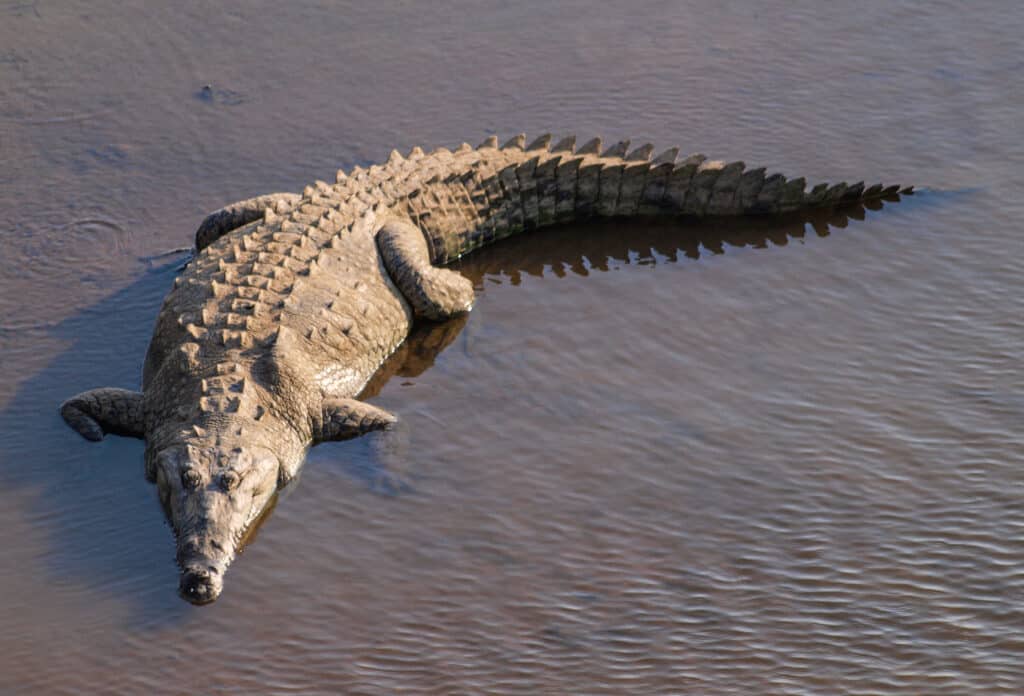
The American crocodile can reach twice the size of the American alligator.
©iStock.com/CStorz
3. Bison — 2,800 pounds
The American bison (Bison bison) is the United States national mammal and the largest terrestrial animal in the nation. These behemoths can tip the scales at 2,800 pounds, with an average weight of 1,800-2,400 pounds.
Bison are the only wild cattle species native to North America. Like other cattle, the bison is a ruminant with a four-compartment stomach. Bison feed on grasses, weeds, and leafy plants. They can spend up to 11 hours a day eating. In the winter, they use their gigantic heads as plows to clear away snow so they can reach the vegetation underneath.
Bison once roamed two-thirds of the North American continent. Only a select few animals mirror that type of range today, such as the mouse, white-tailed deer, and American robin.
The westward expansion of European settlers decimated the bison population in the U.S. Through conservation and restoration efforts, bison have made a comeback, though the population is still a mere shadow of their once-historic numbers across the nation. Today, most wild bison live in national parks, wildlife refuges, and on tribal lands.
While wild bison are the largest wild land mammal in the United States, domestic bison can grow far larger. Some farm-raised bison can weigh over 1,000 pounds more than those in the wild.

The American bison is far and away the largest terrestrial mammal in the United States.
©O.S. Fisher/Shutterstock.com
2. Pacific Walrus — 3,700 pounds
The final two animals on the list are pinnipeds. While they are aquatic animals, they spend some time on land, thus, they made it to the list. And their prodigious sizes rocket them to the top of the heaviest animals in the United States.
The Pacific walrus (Odobenus rosmarus divergens) inhabits the Bering and Chukchi seas between Russia and Alaska. A bull walrus can weigh 3,700 pounds. A cow can weigh 800-1,000 pounds less than a bull.
Pacific walruses are often found on sea ice, but these giant mammals also congregate on Alaskan islands and the state’s coastline.
Walruses are easily distinguished from other pinnipeds by their whiskers and enormous tusks. The largest walrus tusks ever found measured 36 inches long and ten inches around.
The walrus is a carnivore that feeds mainly on creatures found on the sea floor. Using their sensitive whiskers to search through the darkness of the ocean depths, walruses predate clams, worms, snails, sea cucumbers, and other sea creatures. They will also sometimes prey on fish, such as polar cod.
The walrus’ massive size and its remote habitat mean it has few natural predators. Only orcas and polar bears predate the Pacific walrus. Even then, these predators typically target young or ill/injured walruses.
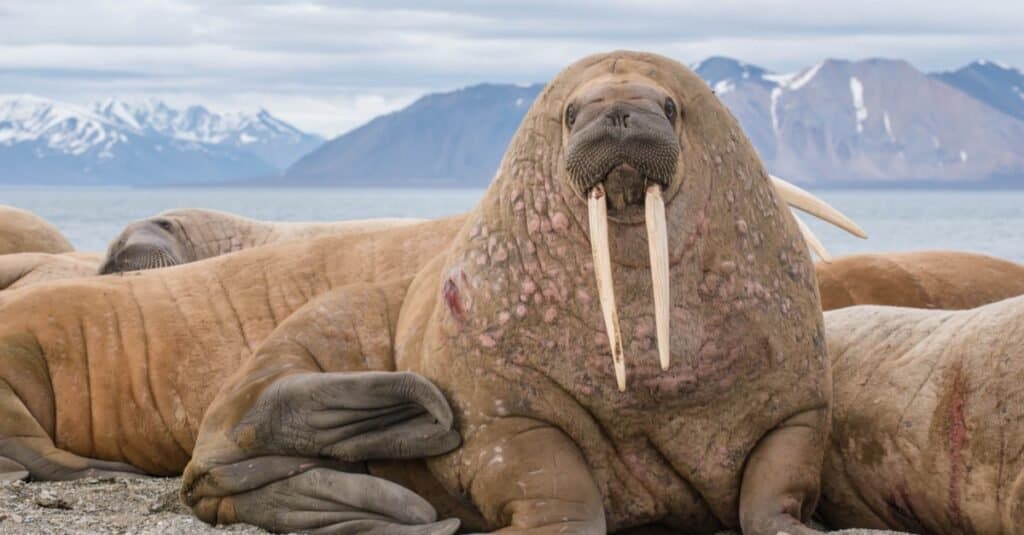
The Pacific walrus features massive tusks and can tip the scales at 3,700 pounds.
©Mikhail Cheremkin/Shutterstock.com
1. Northern Elephant Seal — 5,500 pounds
The northern elephant seal (Mirounga angustirostris) is the largest mammal in the United States. It is the second-largest seal in the world, behind its relative, the southern elephant seal.
Northern elephant seals are found in California. The Channel Islands National Park and Point Reyes National Seashore are among the best places to spot them.
The weight difference between males and females is substantial. Bulls can weigh over 5,000 pounds, while cows might weigh only one-third of that number.
Elephant seals are carnivores that feed mainly on fish and squids, though they are also known to predate rays and even sharks.
Mature bull elephant seals are easily identified by their large, fleshy proboscis that resembles an elephant’s trunk (hence the seal’s name).
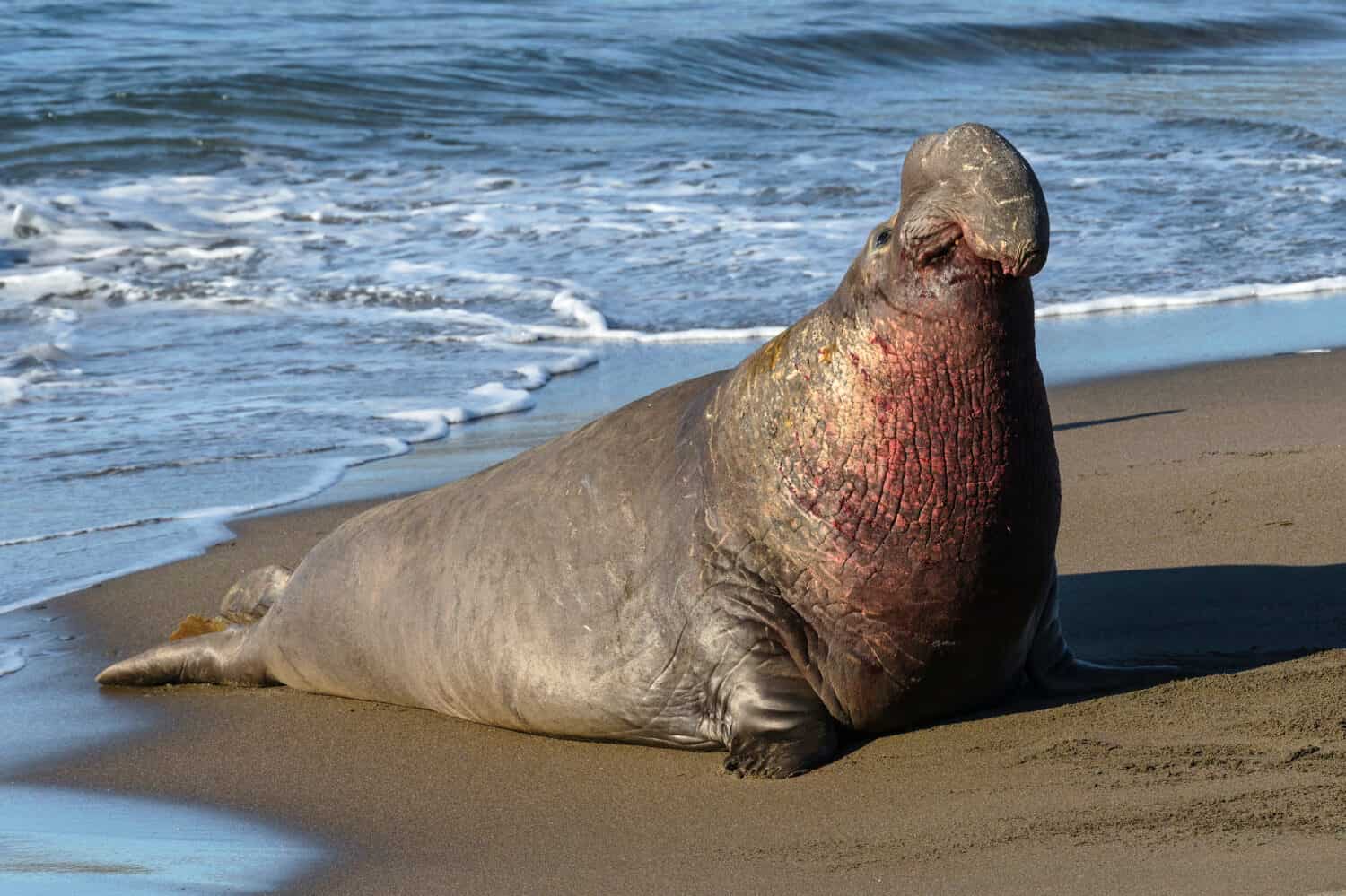
The northern
elephant seal
is the largest animal by weight in the United States.
©David Osborn/Shutterstock.com
Domestic Animals
The above list only accounts for wild animals in the United States. There are domesticated animals in the U.S. that are quite a bit larger than many of the animals on this list. For example, the Simmental is one of the largest domestic cattle breeds in the U.S., with mature bulls weighing 2,800 pounds or more.
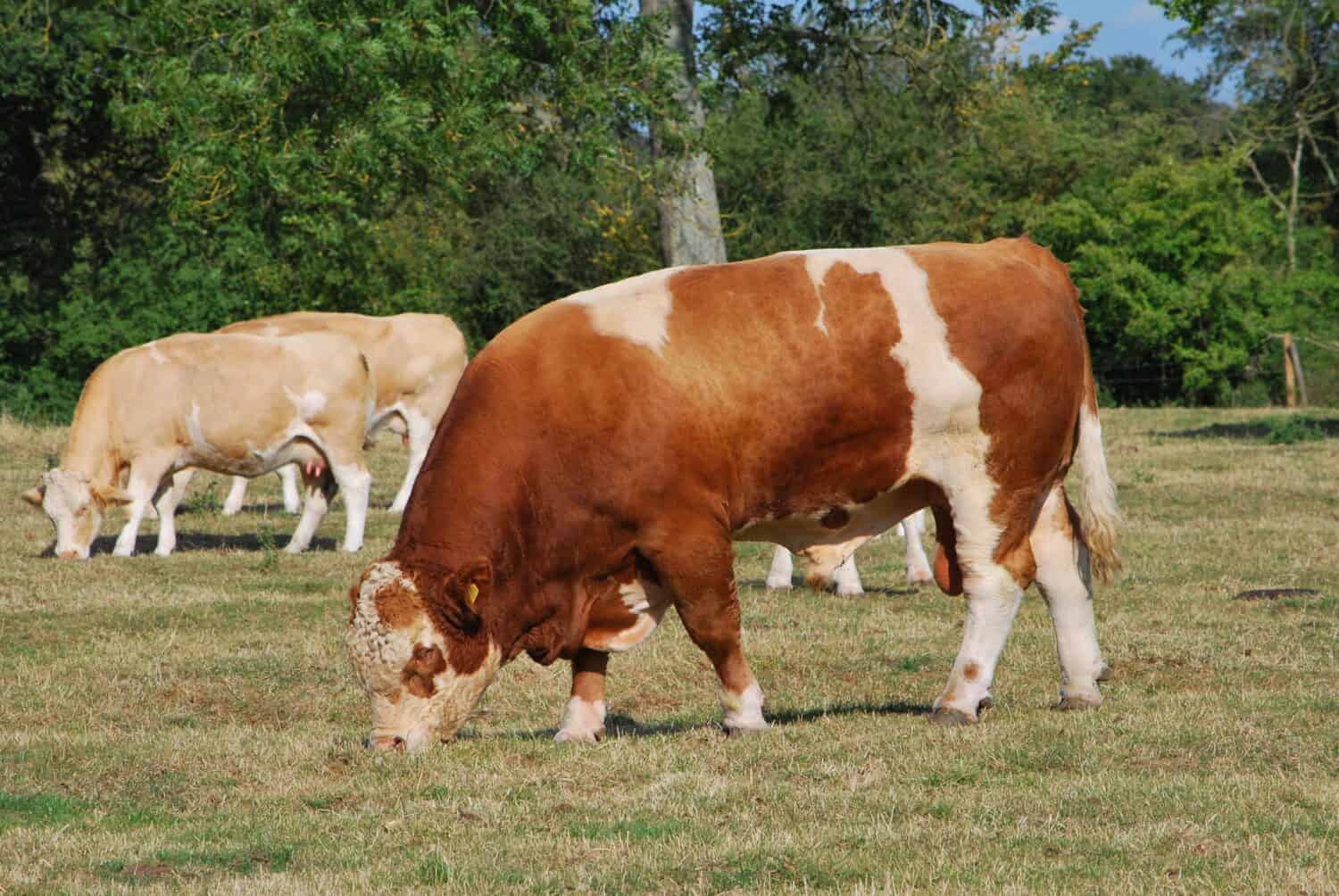
A Simmental bull can weigh over 2,800 pounds.
©wolfman57/Shutterstock.com
Heaviest Animals in the World
The heaviest land animal on Earth is the African bush elephant, with mature bulls weighing 11 tons or more. However, the heaviest animals in the world live in the ocean. In fact, the world’s top ten heaviest animals are all whales, with the blue whale leading the way. Blue whales are believed to be the largest animal to ever live, weighing over 400,000 pounds! For a bit of added perspective on their gargantuan size, consider this: the blue whale’s tongue alone weighs over three tons, more than any animal listed above!
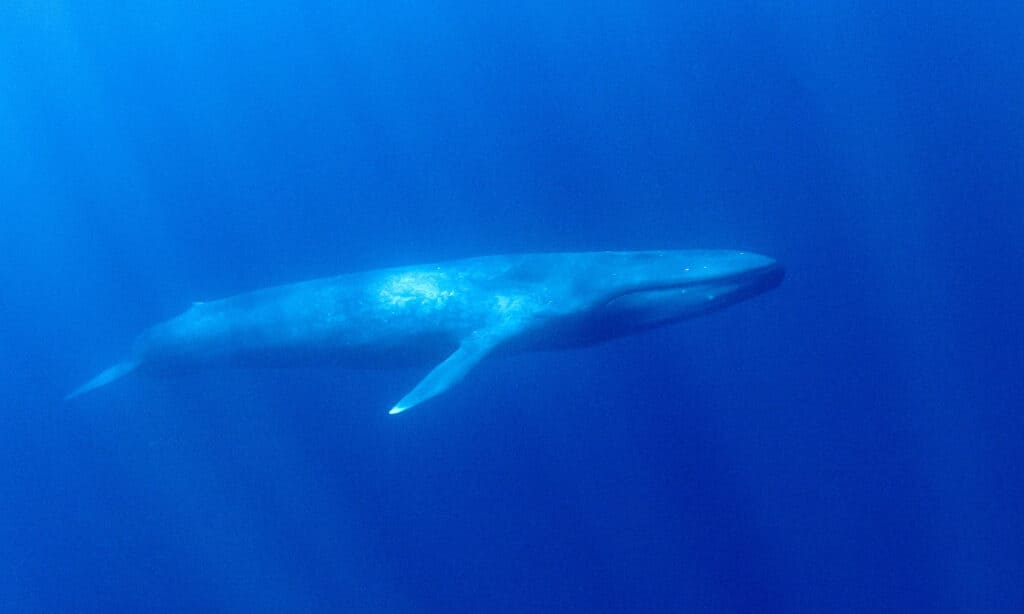
The blue whale is quite possibly the largest creature to ever live.
©iStock.com/richcarey
Summary of the 11 Heaviest Animals Still Roaming Wild in the U.S.
| Rank | Animal | Weight |
|---|---|---|
| 1 | Northern Elephant Seal | 5,500 pounds |
| 2 | Pacific Walrus | 3,700 pounds |
| 3 | American Bison | 2,800 pounds |
| 4 | American Crocodile | 2,000 pounds |
| 5 | Moose | 1,700 pounds |
| 6 | Bison | 1,500 pounds |
| 7 | Polar Bear | 1,400 pounds |
| 8 | Kodiak Bear | 1,300 pounds |
| 9 | Elk | 1,000 pounds |
| 10 | Muskox | 900 pounds |
| 11 | Grizzly Bear | 800 pounds |
The photo featured at the top of this post is © Harry Collins Photography/Shutterstock.com
Thank you for reading! Have some feedback for us? Contact the AZ Animals editorial team.






